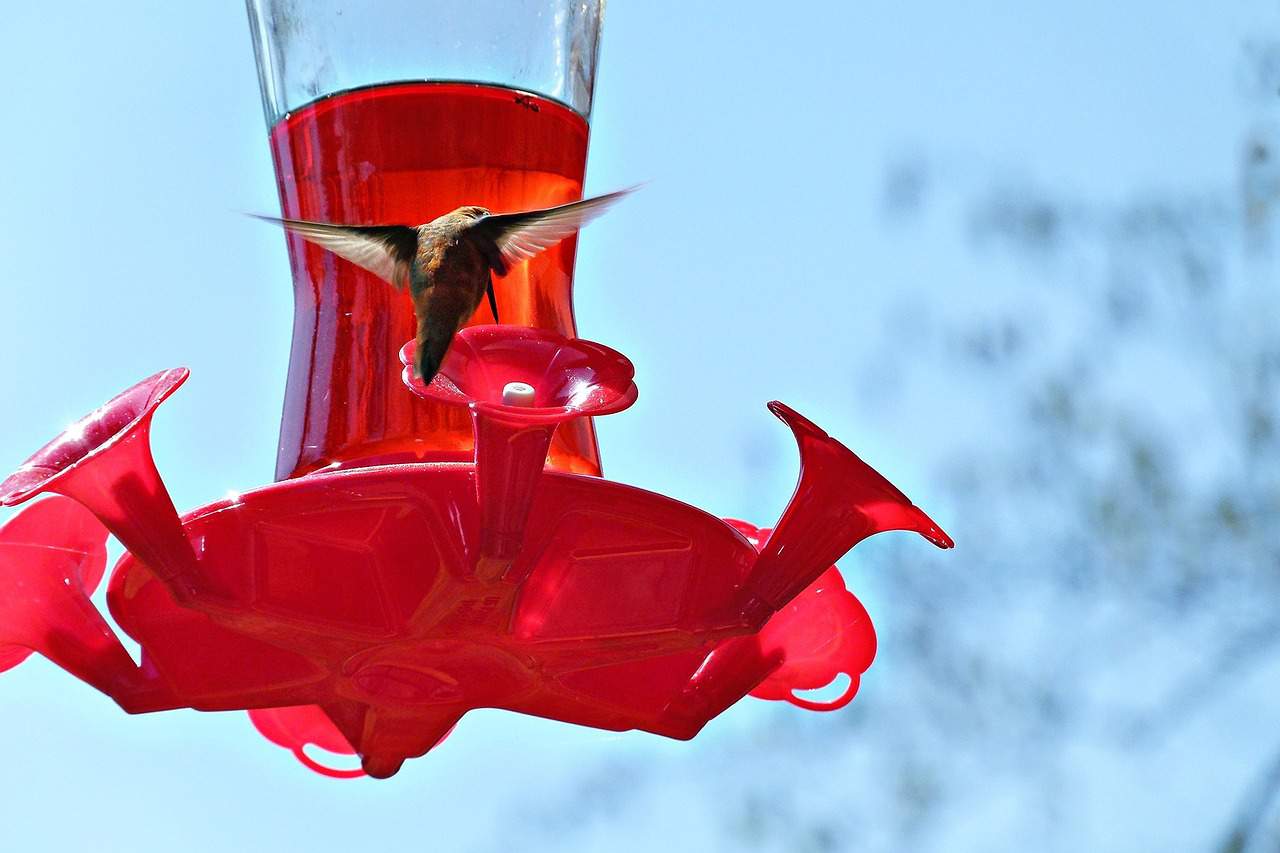If you’re able to build friendships with hummingbirds, you’re lucky! As new friends of hummingbirds, it is now your duty to keep them safe from any harm.
That’s why today we’re going to shed light on a topic that is, although, considered common knowledge to us hummingbird enthusiasts, but in my view, it isn’t discussed as much. So let’s settle this once and for all, Is red dye bad for hummingbirds?
Is Red Dye Bad for Hummingbirds?

I’m sure you’ve heard about it, how red dye can be harmful to hummingbirds. There is truth to that, at least somewhat of it. The red dye scare spread in the mid-1970s when a bunch of researchers tested the dye on some rats, who then developed cancer cells.
As for the hummingbirds, the red-dye scare is a lot more anecdotal. People have reported they’ve seen hummingbirds develop tumors in their livers and beakers, have fragile eggshells and also urinate the red dye, eventually dying of the complications.
The reason why red dye was used in the feeder was so the clear glass bottles or feeders from back in the day had an oomph to them, for the birds of course! A little bit of red dye added to the nectar or sugar solution got the hummingbird’s attention right away, although at an unfortunate cost.
Why Red Dye Isn’t Necessary?
Hear me out, adding the red color to the nectar to attract hummingbirds may have been something they did in the past, but history doesn’t need to repeat here. Especially when these beautiful creatures are at stake.
Whether or not red dye actually affects the health of hummingbirds, using it is not necessary. You can get red-colored feeders that are even more helpful in calling out to the little birds, what do you need the red dye for? If the feeder has a pop of red and you have the sugar solution in there, you’re set!
Can Hummingbirds Fly Backwards?
Yes! Hummingbirds are the only birds that can fly backwards. Thanks to their wing design, they can also fly upside down and up and down, in a straight direction.
What About Natural Red Coloring?
I know you’re probably thinking, “I can’t use any red food coloring, but what about natural coloring?” Well, it depends on what the source is. The natural red color in their nectar comes from carmine from crushed insects or flowers like hibiscus or rose.
Is Store-Bought Hummingbird Nectar Safe?
This is also a “depends on” question. While store-bought nectars are safe, look out for the added stuff in there, any extra fragrances, colors are where to draw the line. But if you were to ask me, I’d suggest you save that cash and stick to the sugar solution. It’s simple and works just as well as any nectars, and hey, the hummingbirds will not judge you for it, so you’re good!
What About Other Red Food and Drinks?
Listen, the whole “hummingbird likes red stuff” thing can be confusing. Since red dye is harmful, you might even think of giving them other red-colored food and drinks.
But let me stop you right there, don’t. Again, just stick with the natural nectar-producing flowers in your garden and the handy sugar water. When you give them other red foods and drinks, you don’t know how it’s going to affect them, so steer clear entirely. No harm, no foul!
Attracting Hummingbirds Without Red Dye
So now you’re wondering what on earth can I do to attract hummingbirds that do not involve red dye? Well, I’ve got you! Take a look below to see some of the things you can do to welcome your humming buddies into your space without even thinking about red dye!
Hummingbird Habitat
This is the easiest one, plant hummingbird-friendly flowers like hibiscus, fuschia, cardinals and bee balms in your garden. Hummingbirds love these flowers and their nectar, so if you have them in your garden, you hit the jackpot!
Set up small bird baths or shallow dishes with clean water so hummingbirds can come and take a splash in them when it’s hot. You can also place perches or wires for them to perch on and chill, your garden is going to be the IT spot for hummingbird hangouts!
Homemade Hummingbird Nectar
Now we’re on to the good stuff! If you want to make homemade hummingbird nectar, all you need is sugar and water. Just mix the sugar into the water until it dissolves, and voila, you have the ultimate 5-star hummingbird-approved meal! Now serve it in clean feeders and watch the hummies go nuts for it!
Always clean the feeders before and after feeding because you don’t want your tiny buddies to get sick, do you?
Conclusion
Let’s call it a day here then, I hope you’ve enjoyed learning about the dangers of red dye for hummingbirds, as much as I enjoyed bringing the knowledge to you. Remember, if you want to keep the bond going with your hummingbird buddies, stay away from red dyes and stick to your all-natural homemade nectars. It’s natural, easy to make and they love it!
FAQs
Where Is The Best Place To Keep A Hummingbird House?
The best place to keep your hummingbird house is in a sheltered spot. These can be under the edge of your roof, or under a big, shady tree branch if you have one.
When Does The Hummingbird Mating Season Begin?
Hummingbirds mate in the beginning of spring. This falls in the middle of March until the month’s end, after they return from their winter migration.

